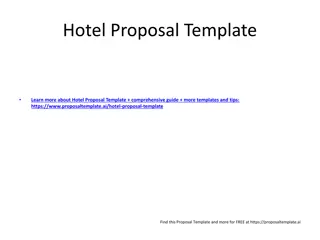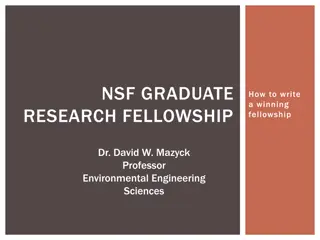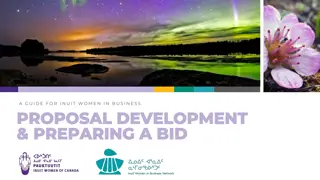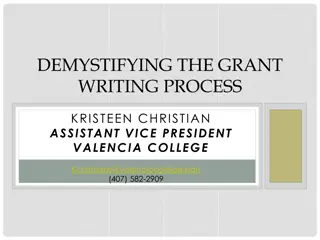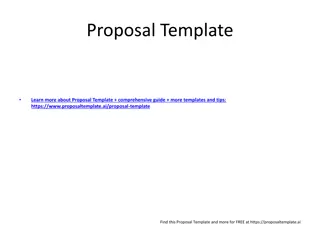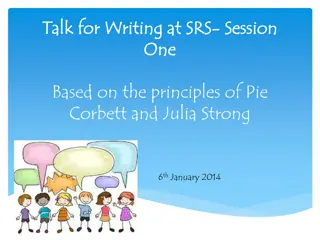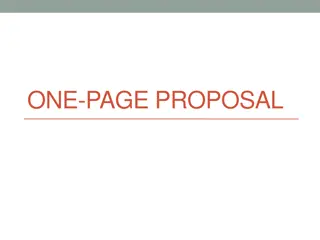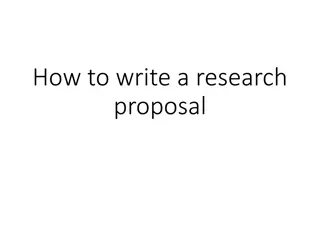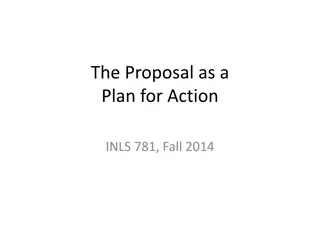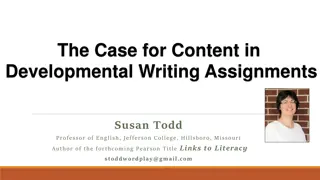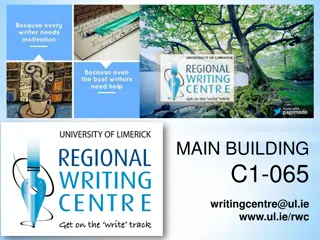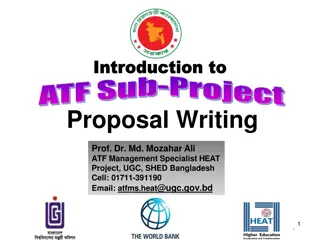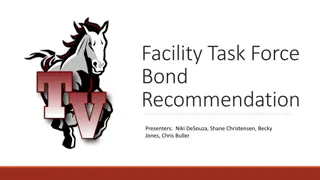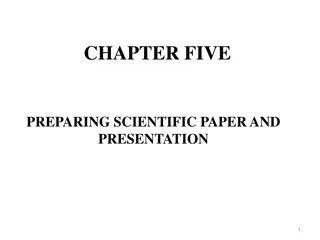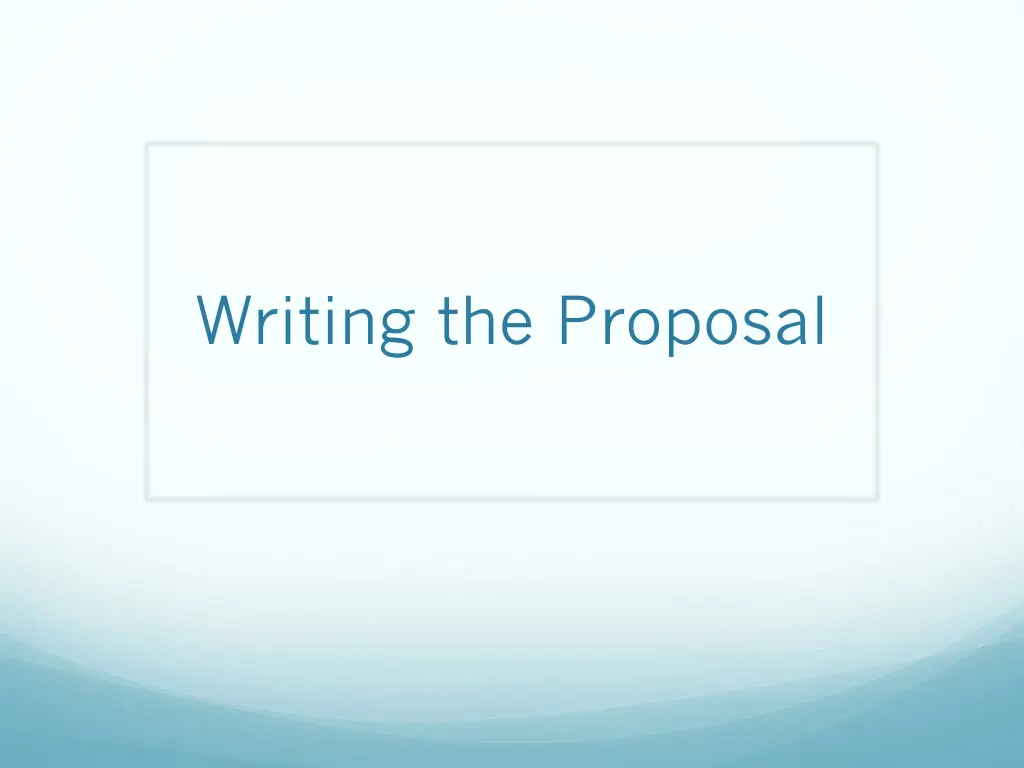
Crafting a Compelling Research Proposal
Explore the essential components of constructing a research proposal, from theory testing structure to the impactful introduction, rhetorical forms in non-fiction, and insights from published IS research. Learn how to engage readers with intriguing opening sentences and why the topic is significant. Delve into the world of academia with this insightful guide.
Download Presentation

Please find below an Image/Link to download the presentation.
The content on the website is provided AS IS for your information and personal use only. It may not be sold, licensed, or shared on other websites without obtaining consent from the author. If you encounter any issues during the download, it is possible that the publisher has removed the file from their server.
You are allowed to download the files provided on this website for personal or commercial use, subject to the condition that they are used lawfully. All files are the property of their respective owners.
The content on the website is provided AS IS for your information and personal use only. It may not be sold, licensed, or shared on other websites without obtaining consent from the author.
E N D
Presentation Transcript
Theory Testing Structure Intro. (Importance of Issue) culminates in Research Question/Contribution Background (Variables. & Behavior) Culminates in Boxes and Arrows Model Hypotheses Method (Setting/Climactic Event) Results (Confirm/Disconfirm Hypotheses) Discussion (Confirm/Disconfirm Background) Conclusion (Importance of our Answer)
Introduction Purpose Why is it Interesting & Important? What is the Question? Clarify Why We Should Care! Set-up as Dramatic Tension Star Wars: princess needs saving murder mystery includes a dead body Pride & Prejudice: 5 unmarried daughters w/no $ Marvel movies? Bollywood? Jackie Chan?
Opening sentences What problem does it set up? What questions does it raise? Are you interested in finding out the answer to these questions?
2 Rhetorical Forms in Non-Fiction It has long been thought that ________, but actually _______ Scale and Scope: This is going to be big and disastrous if we don t understand and prepare for it now
From Non-Fiction An olive, to many, is no more than a humble lump at the bottom of a martini. Yet a closer look reveals a portrait in miniature of the richest parts of our world. (Rosenblum, 1996; pg. 5)
From Published IS Research We begin this paper with what we believe is a telling observation: that the field of information systems (IS), which is premised on the centrality of IT in everyday life, has not deeply engaged its core subject matter the IT artifact. (Orlikowski & Iacono, 2001; pg. 121)
From Published IS Research With the increased availability of data collected from the Internet and other sources and the implementation of enterprise-wide databases, the amount of data that companies possess is growing at a phenomenal rate. Hence, it becomes increasingly important for the companies to be able to better manage their databases. (Kiang & Kumar, 2001; pg. 177)
From a Submission Information technology (IT) is defined as all forms of technology used to create, store, exchange and use information in its various forms (business data, voice conversations, still images, motion pictures, multimedia presentations and other forms, including those not yet conceived) . It is a convenient term for a rapidly expanding range of equipment, applications services and basic technologies that process information. (anonymous; pg. 1)
Introduction Contents General Context & Significance What is big picture for research? Why is it important? Narrowing Context What is known and accepted in your area? Complication What is the problem, roadblock, unknown?
Introduction Contents Long-term Goal What final big result will research achieve? Specific Goal What is the specific narrow goal of this research? Summary of Research Path to Hypothesized Answer to the Complication How does previous research lead to what you believe to be the answer to the complication?
Specific Goal of the Research What is the problem, roadblock, unknown? Problematize it if Necessary! Why won t existing knowledge be adequate? Haven t looked at it before Have looked at it differently before What don t we know that will be important? What will we know/do differently once we have this new knowledge?
Background/Literature Review ID Main Characters Boxes, Arrows Review What s Known About Them That is relevant to your question Leads to your hypotheses Why you believe this is the answer to the problem
Constructs as Characters Background/Setting In literature, this is character development James Bond, Jackie Chan, Hercule Poirot Captain America, Spiderman, Black Panther P&P: sweet, sharp, flirty, follower, inept Star Wars: valiant, dedicated, wise, mercenary, muscle In research, culminates in a theoretical model Boxes and arrows
Hypotheses What you believe to be the answer to the problem/roadblock/unknown/complication Predict Behavior of Boxes in a Situation literature ex: Joe Smith will join the uprising against the emperor and help attack the fort. Does this grip you? Do you believe he will?
Interesting Hypotheses H1: Han Solo will help the rebels destroy the death star. Does this grip you? Why or why not?
Interesting Hypotheses H1: Han Solo will help the rebels destroy the death star. Know about relevant background: Han Solo the rebels & the uprising the Empire & Darth Vadar the Death Star Can predict whether he will or not Mercenary vs. caring idealist
Method (Meta-data) Describe what you did (or will do) Sections Participants Who provided data? What was used in the study? Materials, instruments, equipment, etc. Procedures What did they do or what was done to them?
Your Job in This Section Set the scene with enough detail that reader Knows what s going on Can predict how variables will behave (Hypotheses) Someone else could replicate
Method as Literature This is setting your drama s climactic scene example Pre-battle w/death star scene We have analyzed the death star plans and found this flaw We need to fire into this vent before the death star clears the moon Here are the fighter plane squad leaders
Results Describe the behavior of characters (boxes) in the (study) Describe contents of box Present summary information ex.: Means, std dev Test to confirm/disconfirm hypotheses t(297)=7.9 p<.001
Results = Climactic Scene Behavior of characters in this setting Resolves the dramatic tension Illuminates the characters personalities Does Luke use the force? Does Han Solo help destroy the death star? Teaches us about human nature (theory)
Discussion Interprets the results (characters behavior) In light of the predictions (hypotheses) To confirm, disconfirm or extend theory (from background section) e.g. draw inferences about their characters & the laws governing them May suggest further research
Conclusion Should relate to introduction Why we care about these results
References To be sure the author is accurately represented importance of issue (intro.) characters (variables background) climactic scenes (appropriate methods) desc. & inference about behavior (results) character growth (discussion) helps us grapple w/important issue (conclusion)
Abstract Overview of article purpose of article participants what was done in study summary of important findings Usually around 150 words Write this Last!
Hour Glass Structure Move from broad to narrow to broad Introduction (Importance of Issue) Background (Boxes & Behavior) Hypotheses Method (Setting/Climactic Event) Results (Confirm/Disconfirm Hypotheses) Discussion (Confirm/Disconfirm Background) Conclusion (Importance of our Answer)
Hour Glass Structure Logical consistency between these sections Key to creating a convincing piece of research! Influences decision making
Theory Building Format Intro. Importance of Issue, Phenomena to be Investigated, Research Question/Contribution Method Why Theory Building, Site Selection, Data Sources, Data Analysis Results General Variables & Behavior = Paradigm Model/Story Built Detailed Concept Categories Described w/illustrative example Discussion Summary of Theoretical Frame/Relation to Literature, Show Application to Study Data Existing Theory Concept/Definition = Emergent Concept? Conclusion (Importance of our Answer) To Theory and Practice
Summary Question Solve an Interesting Problem Question Structure One Sentence w/? Research Model - Boxes & Arrows Data Indicators of Boxes Analyses Testing the Arrows Write Ups- What makes a Good One?
Whats in the Proposal? Write it Long, Then Tighten It Up Write a Detailed Outline First Headings/Subheadings; More Structure is Better Tables & Figures for Complex Information Must be Self-Explanatory; Reference Them; Use for both Theory & Method Questions you MUST Directly Address: What important problem (scientific, societal) will you work on? How is your team uniquely qualified to work on it? Exactly what new work will you do? Include a Gantt Chart; Who Does What, When, Where
Proposal Content Include at Least 1 Graphic/Diagram Promise 3 Things Use Language from RFP Criteria as Appropriate Underscore PI Team Prior Collaboration Demonstrates Higher Potential of Success Dispel Suspicion of Shotgun-Marriage of Convenience Leverage/Extend Prior Funded Research Specifically Describe how the Proposed Research Adds Value Above and Beyond Previous Research


